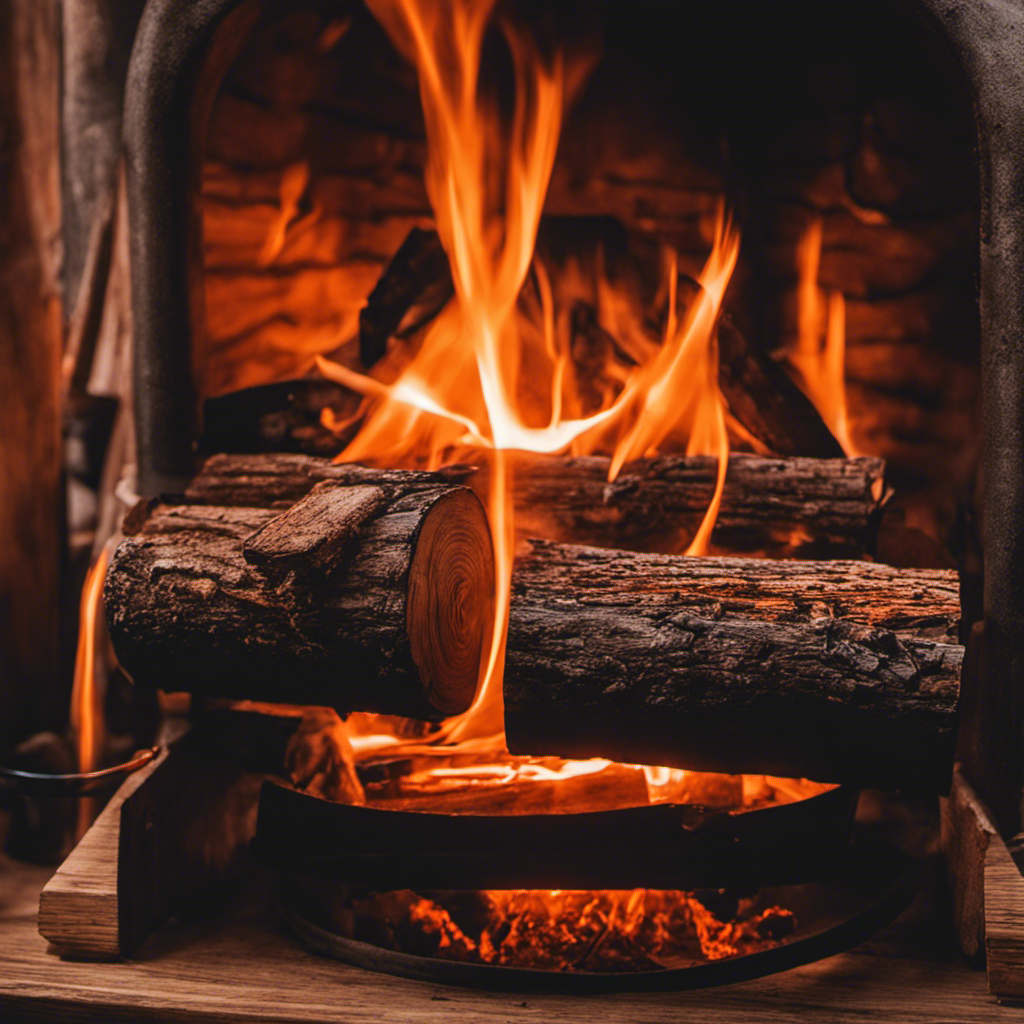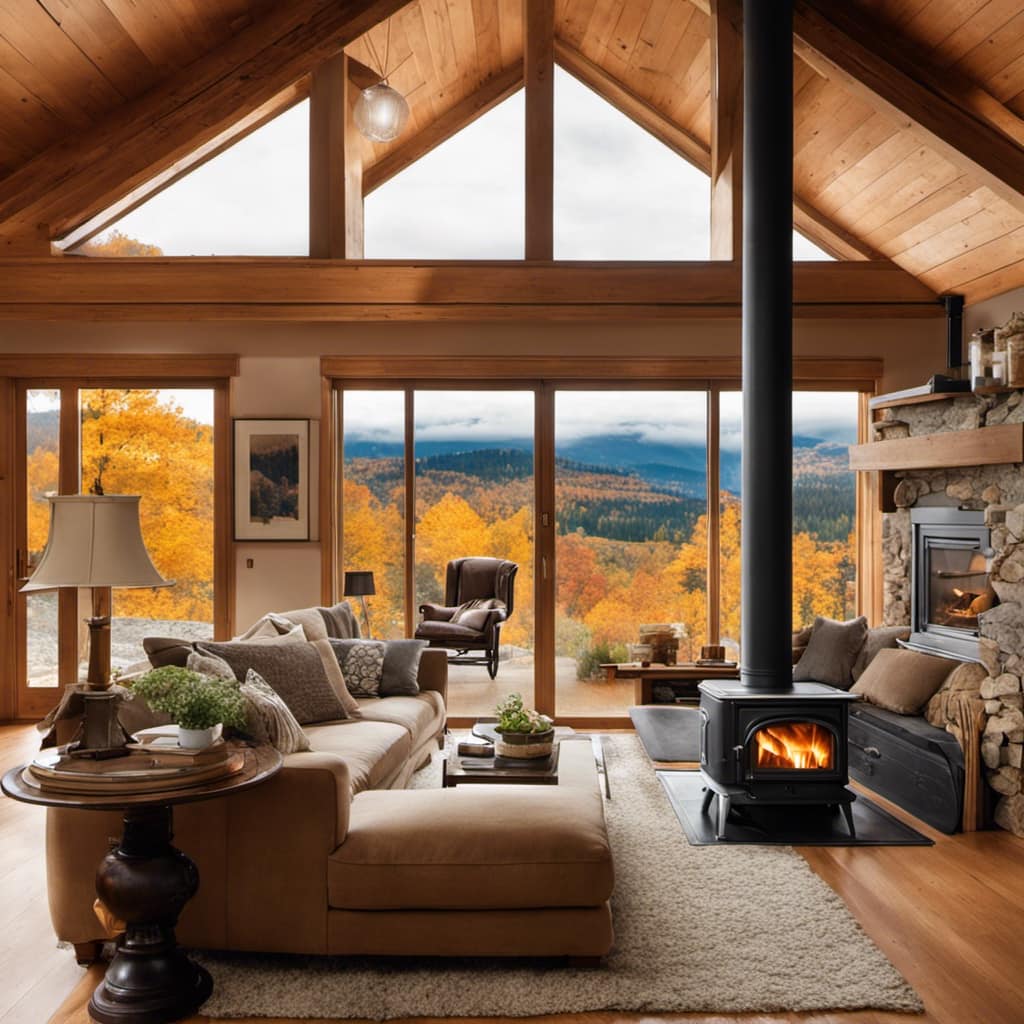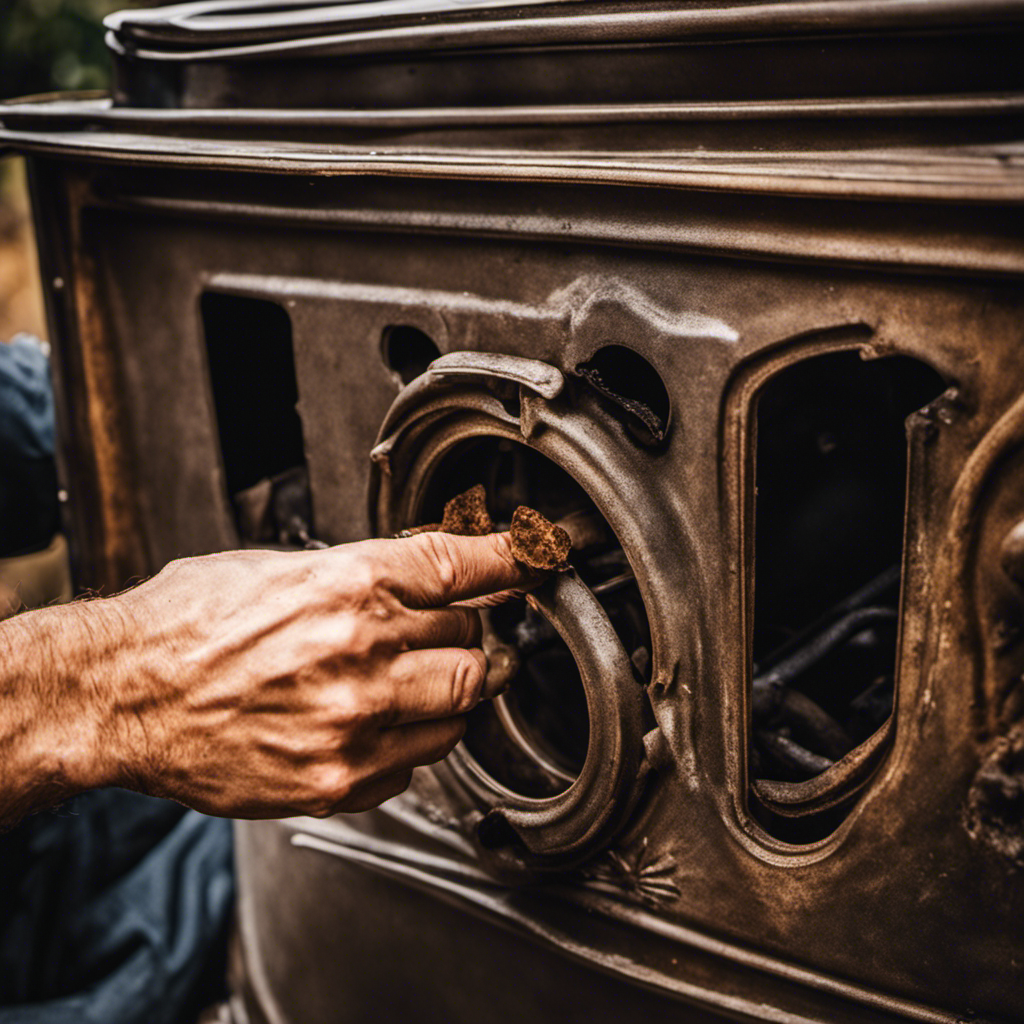Considering installing a wood stove in your mobile home and wondering how you can do it both securely and effectively? Look no further, because I have all the information you need.
In this article, I’ll walk you through the step-by-step process of installing a wood stove in a mobile home. From assessing the suitability of your home to selecting the right stove and ensuring proper ventilation, I’ll provide you with all the technical details you need to know.
Let’s get started!
Key Takeaways
- Assess mobile home regulations and safety guidelines
- Select a suitable wood stove and certified installer
- Prepare for installation by clearing flammable materials and ensuring non-combustible flooring
- Follow proper installation guidelines and ensure safety and proper ventilation measures are in place
Assessing Your Mobile Home’s Suitability for a Wood Stove
I’m evaluating if my mobile home is suitable for a wood stove. Before installing a wood stove in a mobile home, it’s essential to consider mobile home regulations and safety guidelines.

Mobile homes have specific requirements due to their construction and potential fire hazards. One crucial aspect is ensuring proper ventilation to prevent the accumulation of carbon monoxide. This can be achieved by installing a venting system, such as a chimney or direct vent pipe, that complies with mobile home regulations.
Another important consideration is the structural integrity of the mobile home. Wood stoves are heavy and can put a significant load on the floor. It’s crucial to assess if the flooring can support the weight of the stove and if any additional supports or reinforcements are necessary. Professional installation is highly recommended to ensure that the wood stove is installed correctly and safely.
Additionally, mobile home regulations may require specific clearances between the stove and combustible materials, such as walls and floors. These clearances help minimize the risk of fire and ensure proper heat distribution. Always consult local regulations and have a professional assess your mobile home to ensure compliance and safety.
Selecting the Right Wood Stove for Your Mobile Home
After researching different options, I’ve found the perfect wood stove for my mobile home. When selecting a wood stove for a mobile home, it’s crucial to consider the size and heating capacity, as well as the type of wood it uses.
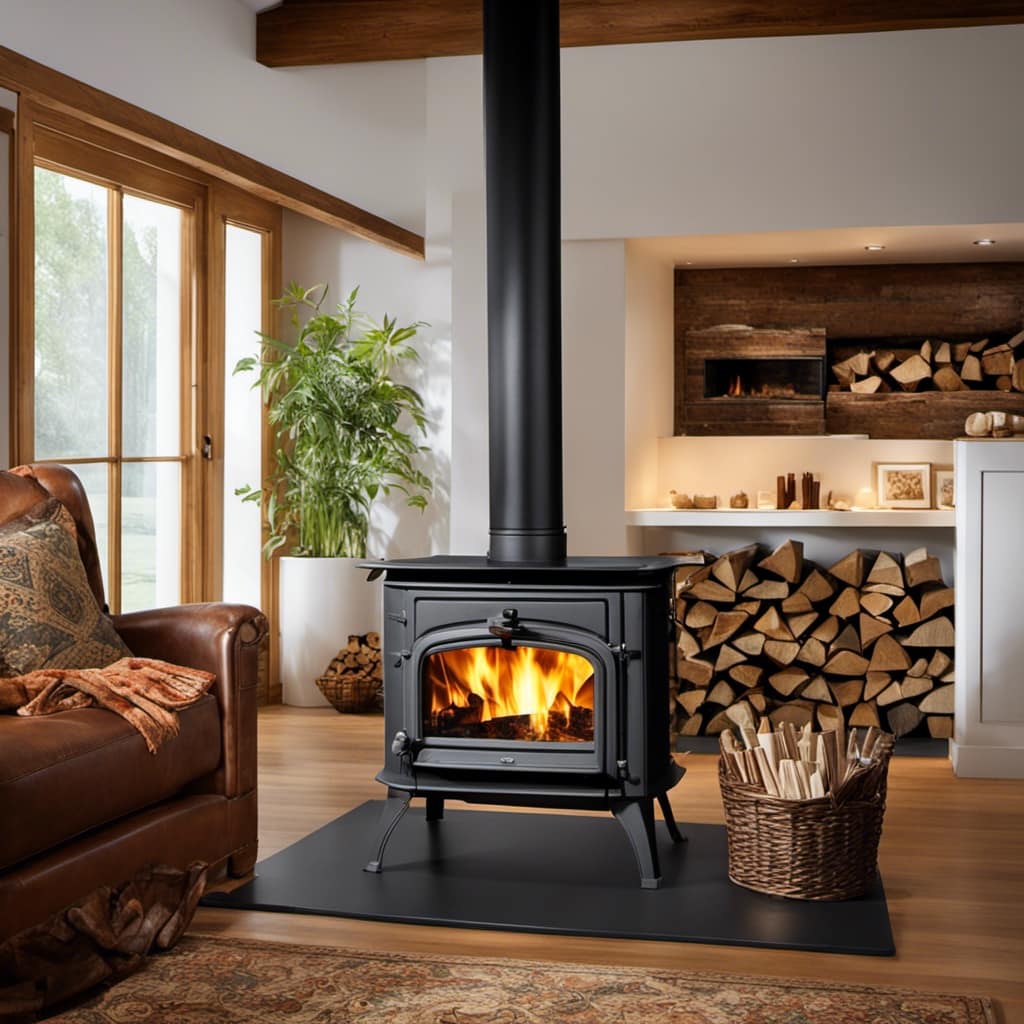
Choosing the right wood type for your stove is essential for efficient and clean burning. Hardwoods like oak, maple, and birch are excellent choices as they provide longer burn times and produce more heat compared to softwoods. Additionally, they create less creosote buildup in the chimney, reducing the risk of chimney fires.
Once you’ve chosen the ideal wood stove, it’s important to find a certified installer for your mobile home. Installing a wood stove in a mobile home requires expertise and knowledge of specific safety regulations. Look for an installer who’s certified and experienced in working with mobile homes. They’ll ensure that the stove is installed correctly, including proper venting and clearances. It’s crucial to follow all safety guidelines to prevent any potential hazards.
Preparing Your Mobile Home for Wood Stove Installation
To properly prepare for the installation of a wood stove in my mobile home, I need to ensure that the designated area is clear of any flammable materials. This is crucial to comply with mobile home regulations and ensure fire safety precautions are in place. Mobile home regulations dictate certain requirements for wood stove installations to minimize the risk of fire and ensure the safety of occupants.
First and foremost, it’s important to check with local authorities and mobile home park management to understand any specific regulations or guidelines that may apply. They may have additional requirements or restrictions regarding wood stove installations.

Next, I need to clear the designated area around the wood stove. This involves removing any flammable materials, such as curtains, furniture, or other combustible items. It’s important to maintain a clear space around the wood stove to prevent accidental fires and allow for proper ventilation.
Additionally, I need to ensure that the flooring beneath the wood stove is non-combustible. This can be achieved by using materials such as fire-resistant tiles or a metal sheet. This prevents heat from transferring to the floor and reduces the risk of fire.
Lastly, I need to ensure that the wood stove is properly installed according to manufacturer guidelines and local regulations. This may involve hiring a professional installer who’s familiar with mobile home installations.
Installing the Wood Stove and Chimney in Your Mobile Home
I need to carefully consider the location for the chimney in my mobile home to ensure proper ventilation and compliance with safety regulations. Installing a wood stove in a small space like a mobile home requires special attention to ensure safety and efficiency.
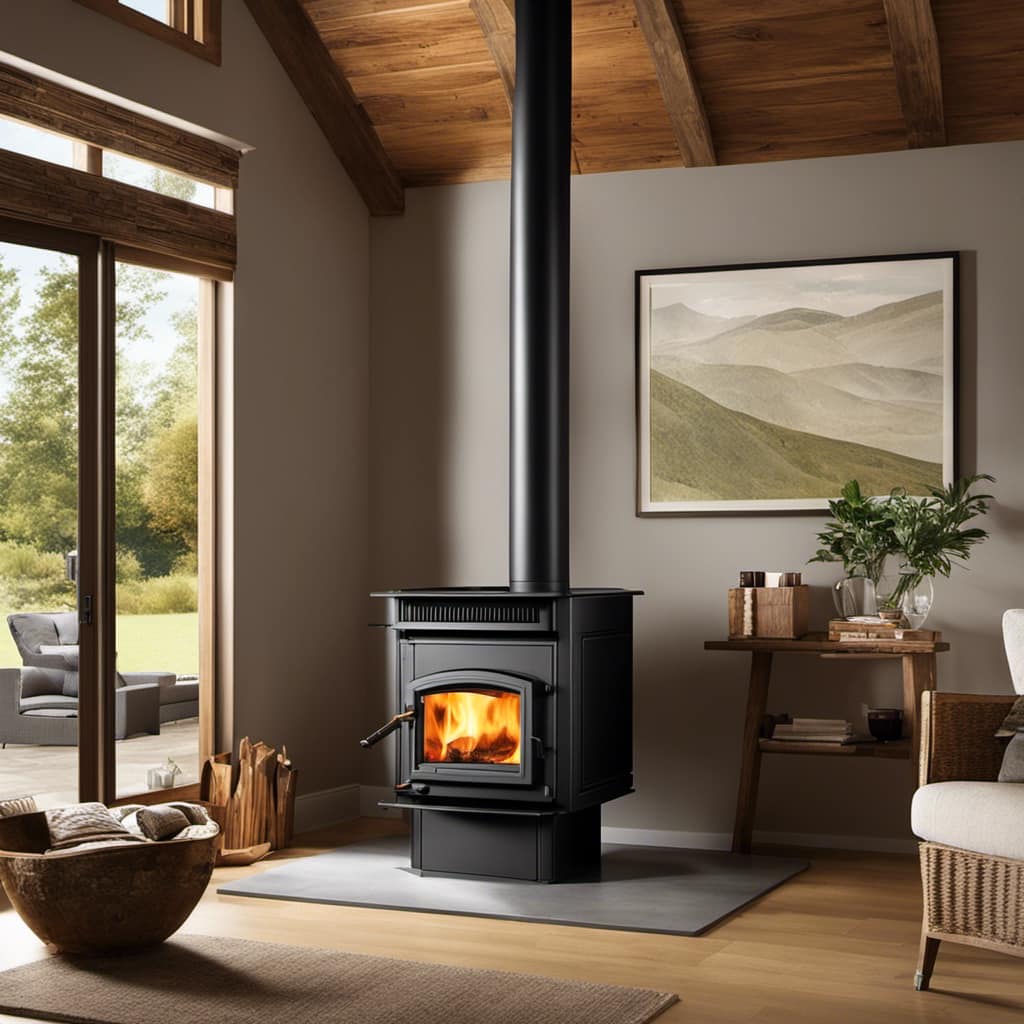
When choosing the location for the chimney, it’s important to select a spot that allows for proper clearance from combustible materials, both inside and outside the home.
To maintain a wood stove in a mobile home, there are several tips to keep in mind. First, make sure to clean the chimney regularly to prevent the buildup of creosote, a highly flammable substance that can lead to chimney fires. Additionally, always use dry and seasoned firewood to ensure efficient burning and minimize the production of smoke and pollutants.
Properly maintaining the wood stove also involves inspecting and cleaning the stovepipe and its components on a regular basis. This includes checking for any signs of damage or wear, such as cracks or loose fittings. It’s also important to regularly clean the ash and debris from the stove to prevent blockages and maintain optimal airflow.
Ensuring Safety and Proper Ventilation for Your Wood Stove in a Mobile Home
Ensuring safety and proper ventilation for my wood stove in a mobile home is crucial for preventing potential hazards and maintaining a healthy living environment. Regular maintenance is of utmost importance when it comes to wood stoves in mobile homes.

It’s essential to clean the stove regularly to remove any buildup of soot and creosote, as these can pose a fire hazard. This can be done by using a wire brush to scrape off any debris from the interior walls of the stove. Additionally, inspecting the stove’s components, such as the door gaskets and chimney, for any signs of wear or damage is important. Any necessary repairs should be carried out promptly to ensure the stove functions safely and efficiently.
In terms of improving energy efficiency, there are a few tips to keep in mind. Firstly, sealing any gaps or cracks around the stove and chimney can help prevent drafts and heat loss. This can be done using high-temperature silicone caulk or heat-resistant sealant. Secondly, using properly seasoned firewood can greatly improve efficiency. Well-seasoned firewood burns more efficiently, producing more heat and less smoke. Lastly, using a heat-powered fan or blower can help distribute the warm air more effectively throughout the mobile home, maximizing the stove’s efficiency.
Frequently Asked Questions
Can I Install a Wood Stove in a Mobile Home That Is Not Designed for It?
Yes, I can install a wood stove in a mobile home that isn’t designed for it.
However, there are alternative heating options to consider. Electric heaters, for example, have their pros and cons. They’re easy to install and provide instant heat, but they can be more expensive to operate compared to wood stoves.

Additionally, wood stoves require proper ventilation and safety measures to ensure they’re installed correctly and don’t pose a fire hazard.
What Are the Potential Risks of Installing a Wood Stove in a Mobile Home?
Potential risks of installing a wood stove in a mobile home include:
- Fire hazards
- Carbon monoxide poisoning
- Structural damage
Safety precautions must be taken to minimize these risks. This includes:
- Ensuring proper ventilation
- Using a certified wood stove designed for mobile homes
- Following all manufacturer’s instructions
Additionally, it’s important to have:
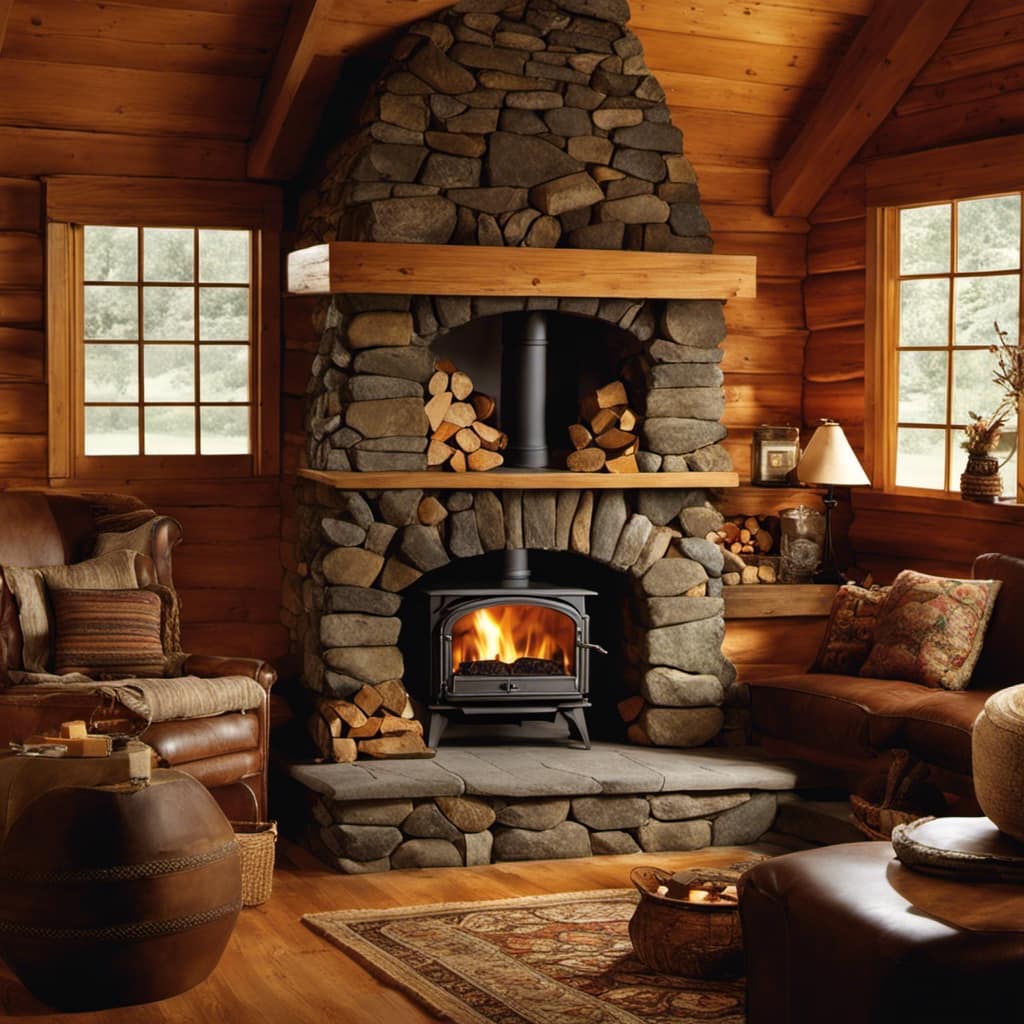
- Working smoke detectors
- Carbon monoxide alarms
Regular maintenance and inspections are also crucial to ensure the safe operation of the wood stove.
How Often Do I Need to Clean and Maintain My Wood Stove in a Mobile Home?
When it comes to maintaining a wood stove in a mobile home, regular cleaning is key. To ensure optimal performance and safety, it’s recommended to clean your wood stove at least once a year. This involves removing ashes, cleaning the flue, and inspecting the stove for any signs of wear or damage.
Other common maintenance tasks include checking seals, lubricating moving parts, and ensuring proper ventilation.
Can I Use a Wood Stove in a Mobile Home as the Primary Source of Heating?
Yes, you can use a wood stove in a mobile home as the primary source of heating. It’s important to consider the differences between using propane and wood as a heating source.
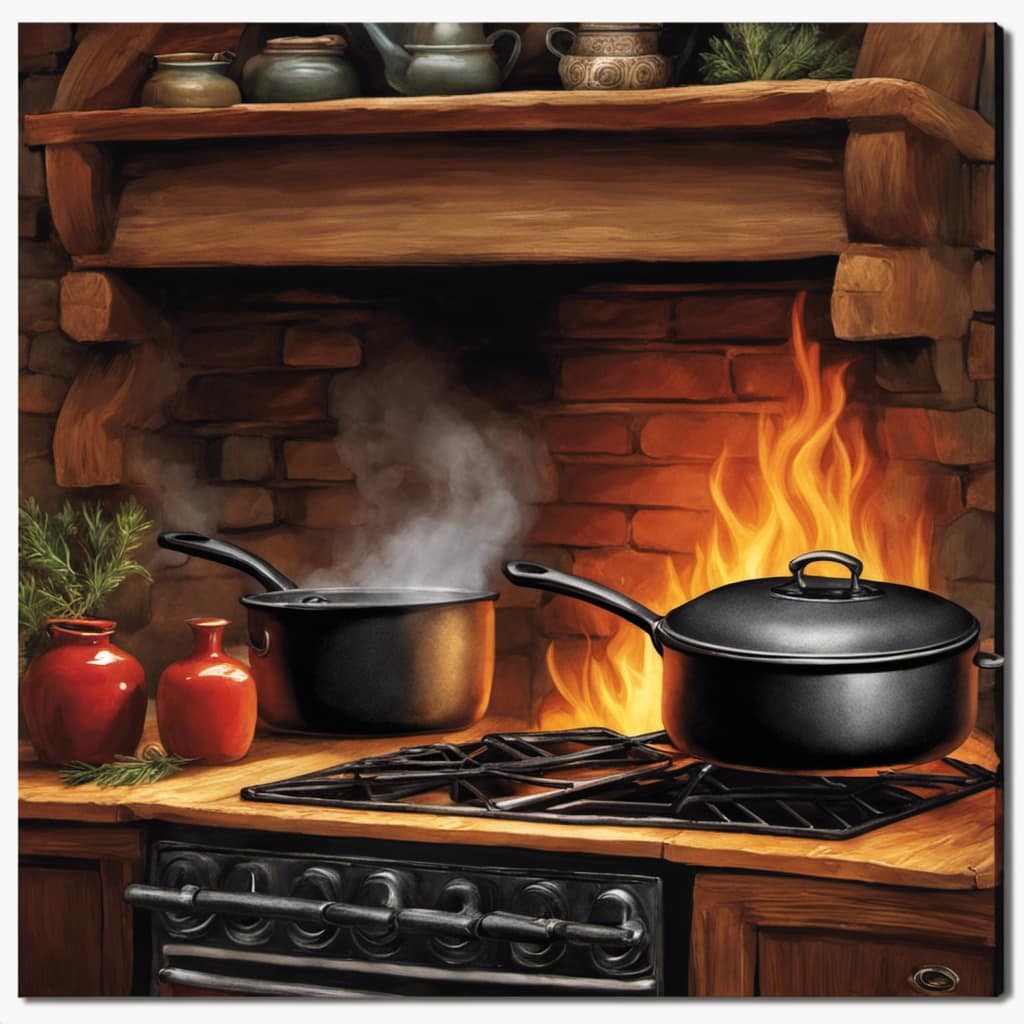
While propane is convenient and requires less maintenance, using a wood stove can be a cost-effective alternative. However, it’s essential to ensure that the installation is done correctly and that the stove is properly maintained to ensure safety and efficiency.
Are There Any Specific Regulations or Permits Required for Installing a Wood Stove in a Mobile Home?
Regulations and permits play a crucial role when installing a wood stove in a mobile home. It’s important to be aware of any specific requirements that may exist in your area. These regulations are in place to ensure the safety and proper installation of the wood stove.
Before proceeding with the installation, it’s advisable to consult local authorities or a professional to determine the necessary permits and any specific regulations that need to be followed.
Conclusion
In conclusion, by following the steps outlined in this article, you can successfully install a wood stove in your mobile home. Remember, safety is paramount, so ensure proper ventilation and follow all guidelines for proper installation.
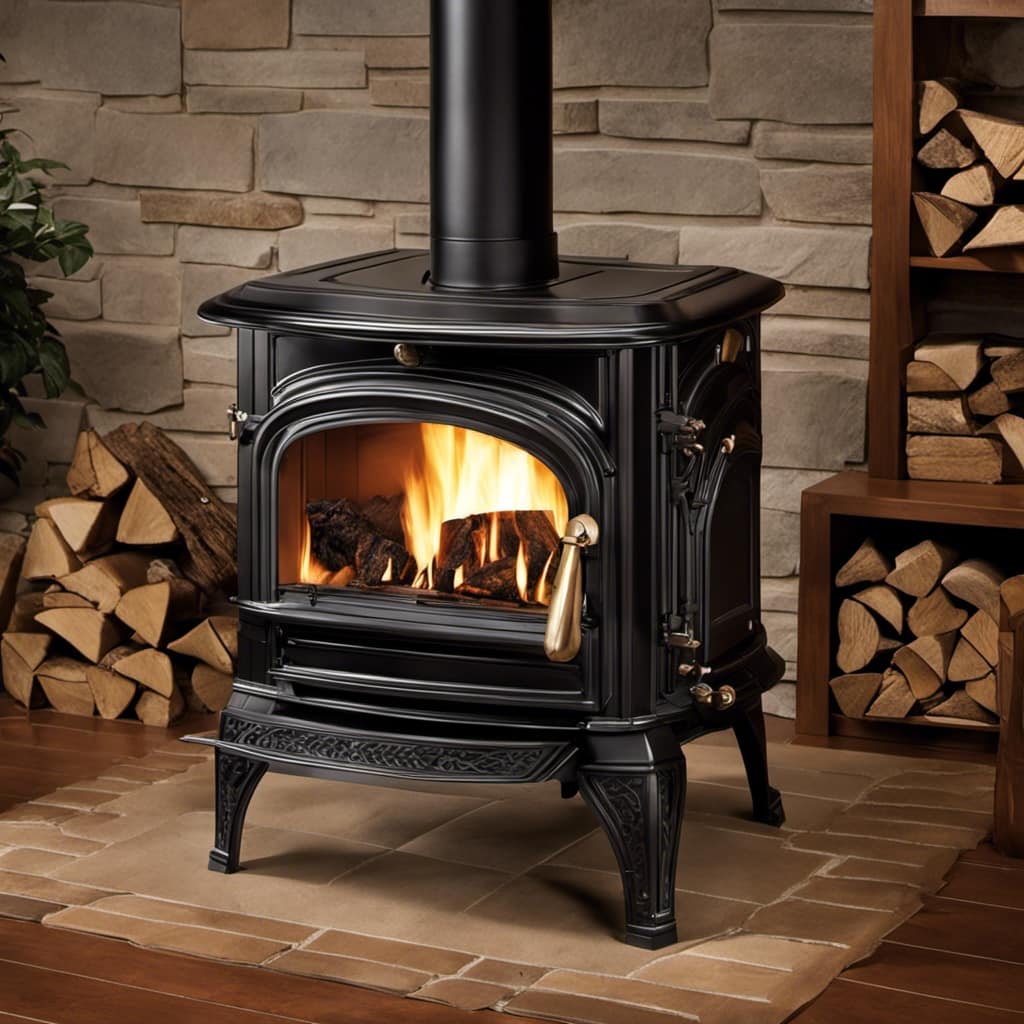
With the warmth and coziness provided by a wood stove, you can create a comfortable and inviting atmosphere in your mobile home.
So, don’t hesitate to embark on this project and enjoy the benefits of a wood stove in your mobile home.
Growing up surrounded by the vast beauty of nature, Sierra was always drawn to the call of the wild. While others sought the comfort of the familiar, she ventured out, embracing the unpredictable and finding stories in the heartbeat of nature.
At the epicenter of every remarkable venture lies a dynamic team—a fusion of diverse talents, visions, and passions. The essence of Best Small Wood Stoves is crafted and refined by such a trio: Sierra, Logan, and Terra. Their collective expertise has transformed the platform into a leading authority on small wood stoves, radiating warmth and knowledge in equal measure.




